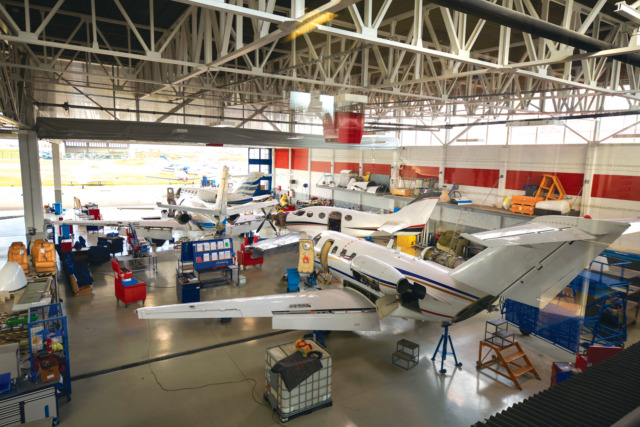
Whether you are a long-time aircraft owner or operator, or a first-time buyer, your aircraft may remain grounded prior to or just after the sale. Current owners also may experience much longer than usual wait times for scheduled or unplanned maintenance. What factors are driving these delays, and what can you do?
An unprecedented number of aircraft transactions have occurred since late 2020 and are continuing through today. The pandemic-induced shortage of aviation parts continues, compounded by the war in Ukraine, which has strained the export of precious metal commodities from which parts are manufactured. And the decrease in available maintenance, repair, overhaul (MRO) capacity for airframe and engine work persists, driven by two factors: retirement of long-time workers, and the surge of new aircraft owners.
The last 21 months of increased flying and parts shortages have overloaded the engine shops, and rental engines are being used for much longer than anticipated. If your MRO facility is able to secure a rental, you may get only one engine to cover both overhauls. This would mean back-to-back shop visits, putting your aircraft out of service for twice as long as usual. When this is the only option, you may run out of operational time on the second engine waiting for your first engine to come out of the shop. Your flight or maintenance personnel can request the engine manufacturer for an extension to bridge the amount of time the engine may be used.
As an aircraft owner, you typically will only install new or exchanged overhauled parts with the proper certification paperwork. But you might want to consider an alternative source: reclaimed parts harvested from out-of-service aircraft. A few companies will buy operational aircraft for disassembly to reclaim parts and components that can be recertified and provided to the market. These parts generally are “as removed,” but usually were serviceable up until the time an aircraft was deregistered. While this might not sound ideal to you, if your aircraft is going to be grounded for nine months because the part it needs does not exist, consider all options that are safe and legal.
Many times, an unserviceable or “as-removed” component can be sent to an FAA-certified repair station for a bench check or overhaul and receive a certification (FAA 8130-3) tag.
When no part or component is available through conventional sources or other means, consider a one-off repair option. Some parts are faulted because of a minor subcomponent for which there was no repair scheme in the manual. There are many engineering companies that can develop a one-time repair solution for the failed items. This takes research on the part of your maintenance team, and may require the use of multiple sources. However, the benefit is getting your aircraft back up in the air sooner.
What You Can Do: Plan Ahead!
What many of us considered early planning five years ago has changed dramatically. Today’s guideline is to plan on at least 12-18 months for moderate and large maintenance events, with 20 months for any that include upgrades to avionics, paint, or interior work. If you plan to put the aircraft in for maintenance on a specific date months in advance, you should also expect that the date could change at any time, before the committed date. If you need to fly that week, consider making plans now for alternative lift. If your aircraft is unable to make its scheduled date, expect it to be moved out for weeks – not days – until the next slot becomes available.
The current market conditions will continue for some time. There are signs of some improvement, however, not enough to support the demand on the system. Adapting to the new environment, thinking out-of-the-box, and exploring alternate resources will help keep your aircraft available and flying.
George Kleros, Senior VP, Advisory Services for Jet Support Services, Inc. (JSSI), has more than 30 years of experience in Aviation Maintenance, Management, and Field Support Services for business jet aircraft.





